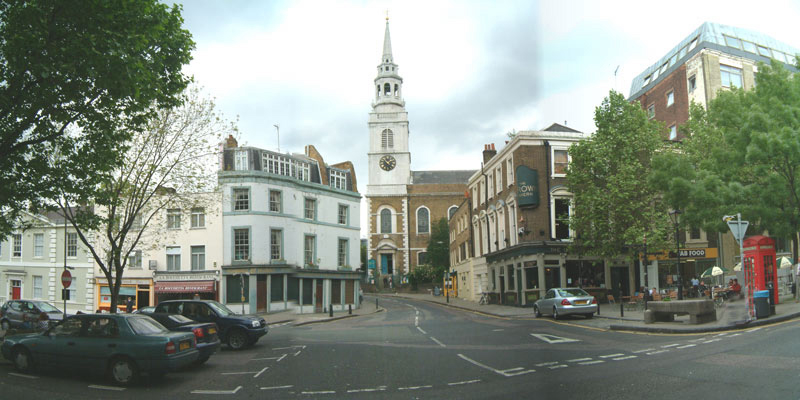In the 17th century Clerkenwell became a fashionable
place of residence. A prison erected here at this period gave place later
to the House of Detention, notorious as the scene of a Fenian outrage
in 1867, when it was sought to release certain prisoners by blowing up
part of the building. Before Clerkenwell became a built-up area, it had
a reputation as a resort where Londoners could disport themselves at its
spas, tea gardens and theatres. Sadler's Wells has survived, after rebuilding,
as heir to this tradition. The Industrial Revolution changed the area greatly.
It became a centre for breweries, distilleries and the printing industry.
It gained an especial reputation for the making of clocks and watches, which
activity once employed many people from around the area. Flourishing craft
workshops still carry on some of the traditional trades, such as jewellery-making.
The owners of many former industrial buildings have recently converted them
into loft dwellings.
Clerkenwell Green lies at the centre of the old village, by the church,
and has a mix of housing, offices and pubs. In conveying some impression
of its history it probably gives the appearance of one of the better-preserved
village centres close to central London. In Charles Dickens' Oliver Twist,
Clerkenwell Green is where Fagin and the Artful Dodger induct Oliver into
pickpocketing amongst shoppers in the busy market once held there. Indeed
Dickens knew the area well and was a customer of the Finsbury Savings Bank
on Sekforde Street, a street linking Clerkenwell Green to St John's Street.
The London Government Act 1899 incorporated the civil parish of Clerkenwell
into the Metropolitan Borough of Finsbury. The parish included also the
Pentonville area.
|
 1805 Map of Clerkenwell
1805 Map of Clerkenwell
|
 1805 Map of Clerkenwell
1805 Map of Clerkenwell 